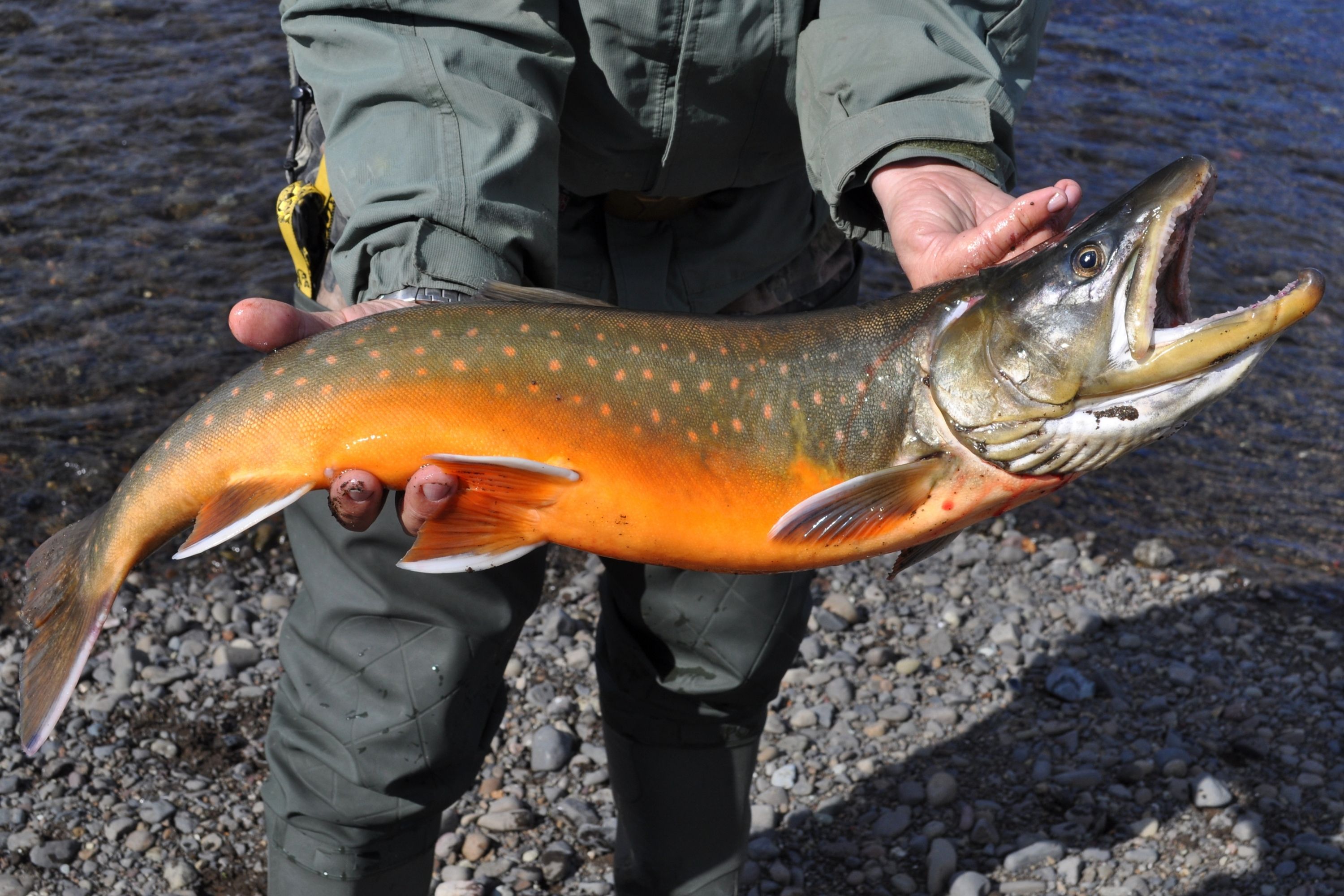Arctic char
(Salvelinus alpinus)

Description
The Arctic char or Arctic charr (Salvelinus alpinus) is a cold-water fish in the family Salmonidae, native to alpine lakes and arctic and subarctic coastal waters. Its distribution is Circumpolar North. It spawns in freshwater and populations can be lacustrine, riverine, or anadromous, where they return from the ocean to their fresh water birth rivers to spawn. No other freshwater fish is found as far north; it is, for instance, the only fish species in Lake Hazen on Ellesmere Island in the Canadian Arctic. It is one of the rarest fish species in Great Britain and Ireland, found mainly in deep, cold, glacial lakes, and is at risk from acidification. In other parts of its range, such as the Nordic countries, it is much more common, and is fished extensively. In Siberia, it is known as golets (Russian: голец) and it has been introduced in lakes where it sometimes threatens less hardy endemic species, such as the small-mouth char and the long-finned char in Elgygytgyn Lake. The Arctic char is closely related to both salmon and lake trout, and has many characteristics of both. The fish is highly variable in colour, depending on the time of year and the environmental conditions of the lake where it lives. The appearance of Arctic char differs between populations. The dorsal side of the Arctic char is dark in its colour while the ventral varies from red, yellow, and white. Arctic char has a distinct size dimorphism, dwarf and giant. Dwarf Arctic char weigh between 0.2 and 2.3 kg (7 oz and 5 lb 1 oz) and average a length of 8 cm (3 in), while giant Arctic char weigh between 2.3 and 4.5 kg (5 lb 1 oz and 9 lb 15 oz) and average 40 cm (16 in) in length. Individual fish can weigh 9 kg (20 lb) or more with record-sized fish having been taken by anglers in Northern Canada, where it is known as iqaluk or tariungmiutaq in Inuktitut. Generally, whole market-sized fish are between 1 and 2.5 kg (2 lb 3 oz and 5 lb 8 oz). Male and female Arctic char are the same size. The flesh colour can range from a bright red to a pale pink. In North America, three subspecies of Salvelinus alpinus have been recognized. "S. a. erythrinus" is native to almost all of Canada's northern coast. This subspecies is nearly always anadromous. S. a. oquassa, known as the blueback trout or Sunapee trout, is native to eastern Quebec and northern New England, although it has been extirpated from most of its eastern United States range. S. a. oquassa is never anadromous.
Taxonomic tree:







